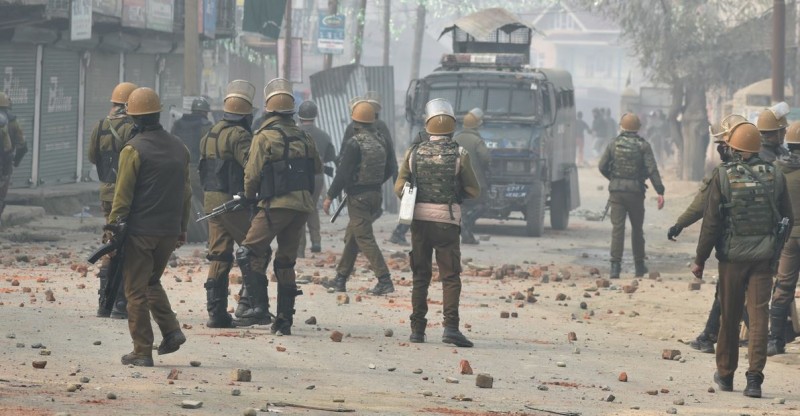
The Kashmir conflict is a long-standing territorial dispute that has marred the South Asian region for decades. This article delves into the historical background of the conflict, tracing its roots back to the partition and independence of India and Pakistan in 1947. We will explore the key events, political decisions, and social dynamics that have contributed to the complex and ongoing issue in the Kashmir region.
1. The Partition of British India
The year 1947 marked a significant turning point in the history of the Indian subcontinent. The British colonial rule ended, and the subcontinent was divided into two separate nations: India and Pakistan. This division was based primarily on religious lines, with India being a predominantly Hindu-majority country and Pakistan being created as a homeland for Muslims.
2. The Princely State of Jammu and Kashmir
Amid the partition, the princely states, ruled by Maharajas, had the option to accede to either India or Pakistan, taking into account geographical contiguity and the religious composition of the population. In the case of the princely state of Jammu and Kashmir, its ruler Maharaja Hari Singh was faced with a complex decision due to its majority-Muslim population.
3. The Instrument of Accession
Maharaja Hari Singh eventually decided to accede to India, signing the "Instrument of Accession" on October 26, 1947. However, this decision was met with opposition from certain sections of the population who favored accession to Pakistan. This led to internal unrest and external interference.
4. The First Indo-Pak War
Following the accession, tribal militias from Pakistan invaded Kashmir, leading to the first Indo-Pak War in 1947-1948. The conflict resulted in the division of the region, with Pakistan gaining control over parts of Kashmir, and India retaining the rest. The United Nations intervened, and a ceasefire line, known as the Line of Control (LoC), was established.
5. Political Turmoil and Insurgencies
Over the years, political turmoil and internal conflicts within Jammu and Kashmir have fueled the unrest. The region witnessed several insurgencies, demanding either complete independence or accession to Pakistan. India responded with military actions, leading to further tensions and human rights concerns.
6. The Role of China
The Kashmir conflict became further complicated with the involvement of China. China occupies a portion of Kashmir known as Aksai Chin, and its support to Pakistan in territorial claims added a new dimension to the issue.
7. The Simla Agreement
In 1972, India and Pakistan signed the Simla Agreement, which aimed at resolving bilateral issues, including the Kashmir dispute, through peaceful means. However, the conflict remained unresolved, and tensions persisted.
8. The Role of Terrorism
In recent decades, terrorism has played a significant role in the Kashmir conflict. Insurgent groups backed by Pakistan have engaged in acts of violence and terrorism, leading to loss of lives and instability in the region.
9. Human Rights Concerns
Throughout the course of the conflict, human rights abuses have been reported from both sides. Cases of disappearances, torture, and extrajudicial killings have raised international concern and condemnation.
10. International Diplomacy and Mediation
Various international bodies and countries have attempted to mediate and find a peaceful solution to the Kashmir conflict. However, a lasting resolution has remained elusive.
11. The Impact on Civilians
The conflict has had a profound impact on the lives of civilians in Kashmir. Displacement, economic hardships, and psychological trauma have become part of the daily existence for many residents.
12. The Way Forward
A sustainable resolution to the Kashmir conflict requires a sincere commitment from all parties involved. Dialogue, trust-building measures, and a focus on addressing the grievances of the people of Kashmir are crucial steps towards finding a peaceful solution.
The Kashmir conflict is a complex issue with deep historical roots dating back to the partition and independence of India and Pakistan in 1947. Over the years, political decisions, external interference, and internal conflicts have added layers of complexity to the dispute. A peaceful resolution is essential not only for the stability of the region but also for the well-being of the people of Kashmir.
Govt Action Looms for Twitter after Viral Video of Manipur Women Paraded Naked
Manipur Unrest: CM Urges Thorough Probe into Viral Video's Authenticity
Sonia Gandhi Urges PM Modi for Manipur Discussion in Parliament